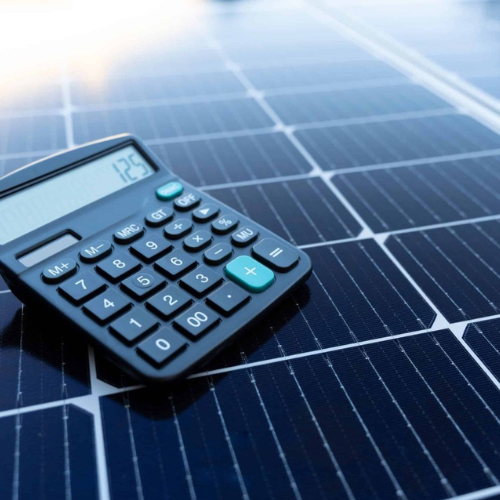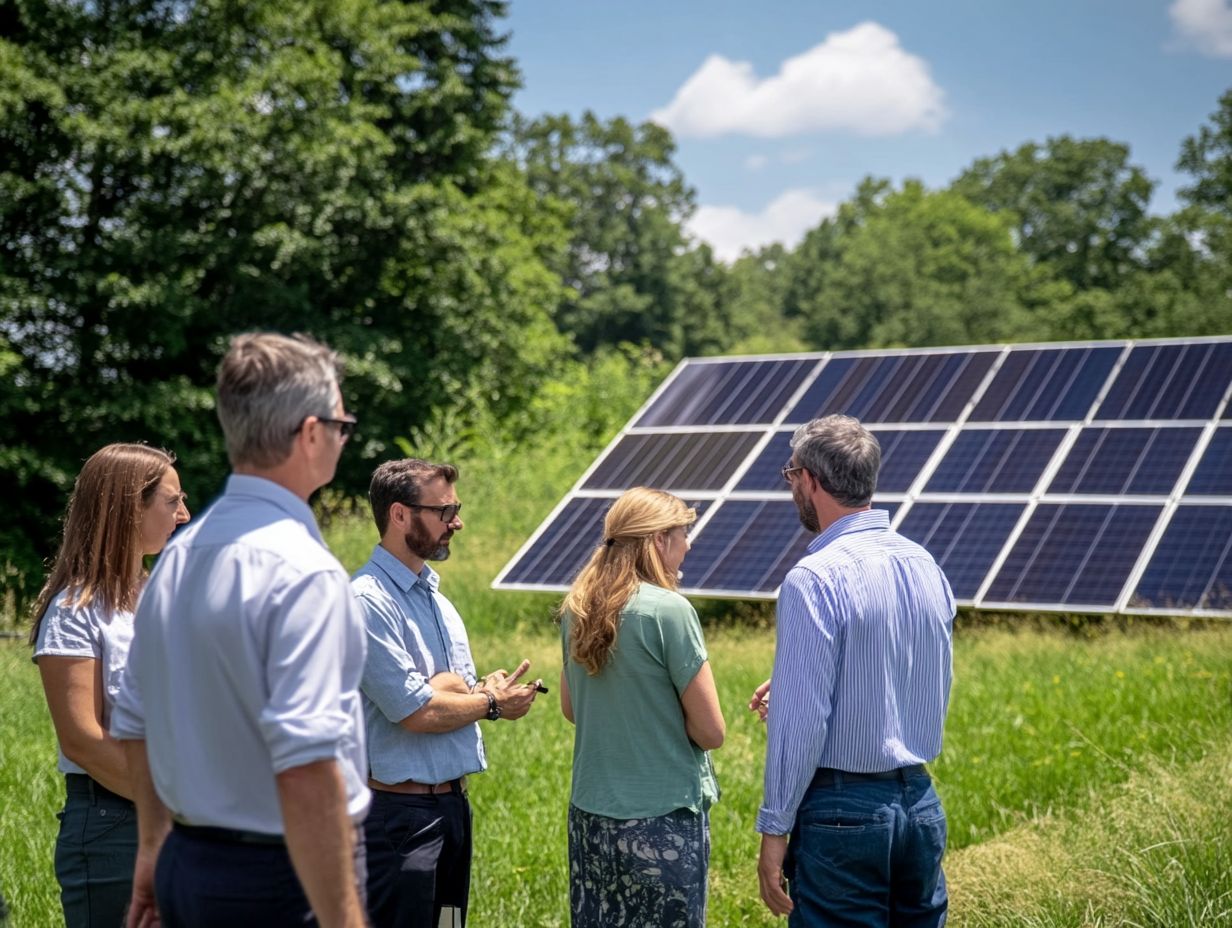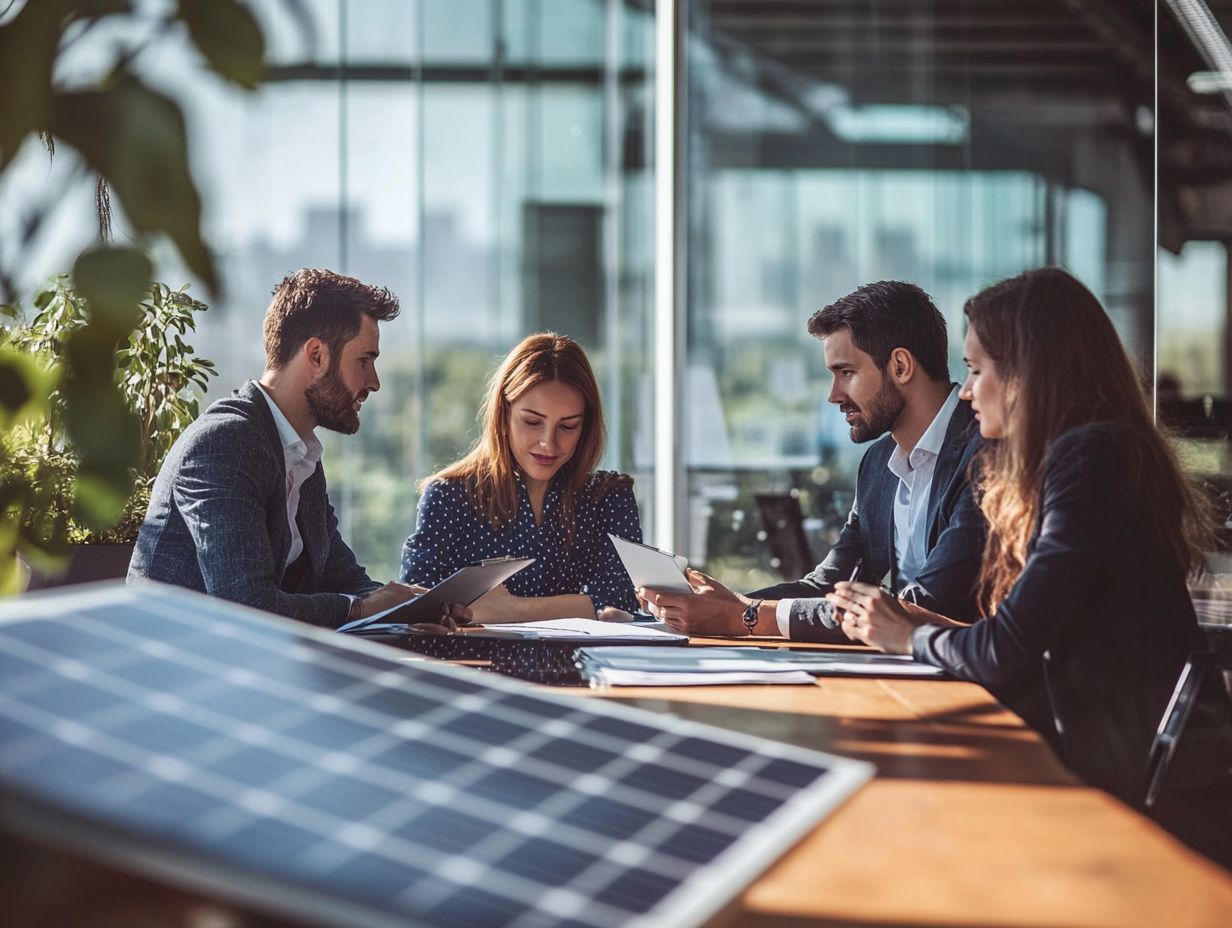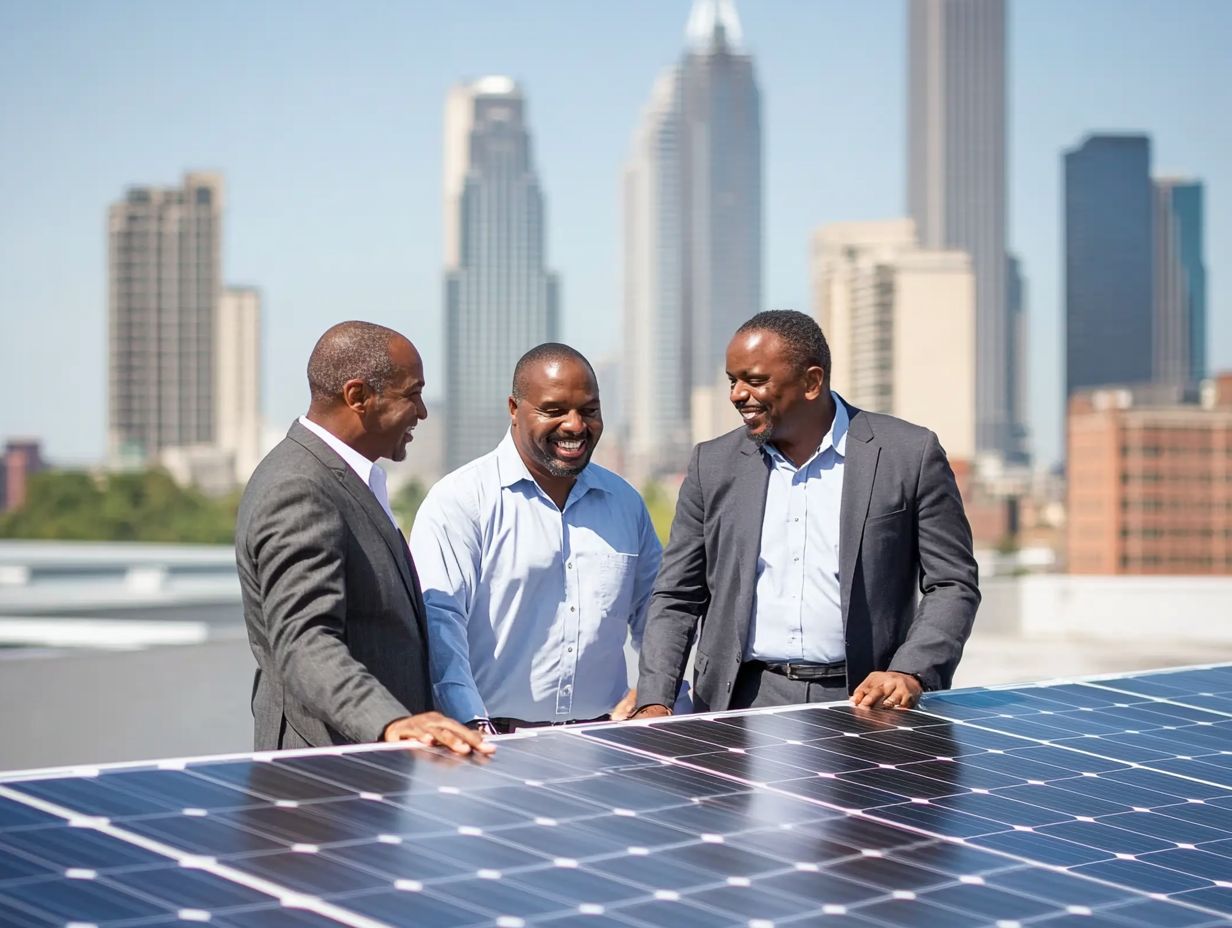Contents
- 1 Why Choose Solar Energy?
- 2 Benefits of Switching to Solar Energy
- 3 Top Mistakes to Avoid When Switching to Solar
- 4 Essential Tips for a Successful Transition to Solar Energy
- 5 Frequently Asked Questions About Solar Energy
- 5.1 What are common mistakes to avoid when switching to solar?
- 5.2 Is it necessary to consult with a professional before switching to solar?
- 5.3 How important is it to understand my energy needs before choosing a solar system?
- 5.4 What should I consider when creating a budget for switching to solar?
- 5.5 Are there any risks involved in switching to solar?
- 5.6 How can I ensure a smooth transition to solar?
Why Choose Solar Energy?
Switching to solar energy is an exciting and eco-friendly choice, but it can definitely feel a bit overwhelming.
You might find yourself making some common mistakes that could undermine your transition and investment. This article dives into the key pitfalls to avoid, like not properly assessing your energy needs or overlooking factors like your location and climate.
Plus, it offers essential tips to help you make a smooth and successful switch to solar energy, so you can really maximize the benefits of your new system.
Benefits of Switching to Solar Energy

Making the switch to solar energy comes with a bunch of benefits that can seriously upgrade your quality of life while also helping the planet. You’ll enjoy increased energy efficiency and start saving on those pesky utility bills.
Plus, you might just boost your property’s value and tap into the long-term perks of renewable energy. Going solar can really be a game-changer for you.
If you get involved in community solar programs, you can amplify those benefits even more and align your energy use with sustainable practices.
As you think about adopting solar, keep in mind how these advantages can lead to energy independence and help reduce your overall environmental impact.
Top Mistakes to Avoid When Switching to Solar
When you start your solar panel installation journey, steering clear of common mistakes can save you both time and money while maximizing the benefits of your solar energy investment.
Many homeowners tend to overlook important steps, like understanding the upfront costs, checking out the solar incentives available in your area, and carefully choosing the right contractor.
Plus, if you forget to think about maintenance costs and the quality of the equipment, you might face some unexpected expenses later on.
By spotting these pitfalls early, you can make the installation process smoother and enjoy better long-term returns on your investment.
National Renewable Energy Laboratory (NREL). (2015). Best Practices in PV System Installation. Link
Not Assessing Energy Needs
One common mistake you might make when considering solar energy is not thoroughly assessing your energy needs. This can lead to underestimating the size of the solar system you actually need for effective energy consumption. Without a proper home assessment or energy audit, you could end up with a system that falls short of meeting your actual energy demands.
This means missing out on savings on your energy bills and potentially dealing with inefficiencies in your setup. So, understanding your energy consumption is a crucial first step in optimizing your solar investment.
You can evaluate your energy needs in several ways, like conducting detailed energy audits or monitoring your past utility bills to spot usage patterns. A professional energy audit will analyze your home’s energy flow, considering factors like insulation, appliances, and your lifestyle habits.
You can also use online calculators to get an estimate of your energy consumption and compare that with what your solar output might be.
These assessments will help ensure that the solar system you choose accurately reflects your household’s requirements, leading to a more efficient setup and maximizing your financial return on investment.
Not Considering Location and Climate
Ignoring the local climate and geographical factors is a big mistake that can really undermine the effectiveness of your solar panel installation. Think about it: the orientation of your home, any potential shading issues from nearby trees or buildings, and the availability of solar resources in your area all play crucial roles in how well your solar system performs.
By considering these elements, you can make sure your grid connection is more effective and maximize your energy output.
For example, if you live in a region with plenty of sunshine, you’ll naturally get more benefits from solar installations compared to areas that are often overcast. A south-facing roof usually gets the most direct sunlight throughout the day, making it a fantastic spot for solar panels. But be careful—trees that shade your roof can really cut down on solar energy generation, especially in the late afternoon when the sun is lower.
By understanding these local climatic quirks and addressing any shading issues, you can significantly boost the efficiency of your solar system, leading to greater energy savings and a more sustainable setup.
Failing to Research Available Incentives

Overlooking available solar incentives and government programs can be a costly mistake for you as a homeowner looking to make the switch to renewable energy. Many states and local governments offer tax credits and financial incentives that can significantly reduce your setup costs and boost your return on investment.
By doing a little research into these incentives, you can better plan your financial commitment and fully reap the benefits of solar energy.
It’s important to understand the various types of incentives out there, which can include rebates, grants, and performance-based incentives that may differ based on where you live. It is highly recommended to check resources like the Database of State Incentives for Renewables & Efficiency (DSIRE) to find specific programs that cater to your needs.
Partnering with a trusted financial advisor can help you creatively weave these solar incentives into your broader financial planning strategies. This way, you can maximize your potential savings and make the switch to solar energy even more appealing.
Not Choosing the Right Contractor
Choosing the right contractor for your solar panel installation is crucially important. If you pick the wrong one, you could end up with a less-than-great installation and compatibility issues with your equipment.
Many homeowners often make the mistake of not doing their homework when it comes to potential contractors. They often overlook key factors like installation certifications, experience, and performance guarantees. Finding a qualified contractor means you’ll get your solar system installed correctly, which maximizes its efficiency and lifespan.
To make sure the contractor you choose meets the right standards, you need to verify their certifications, like those from the North American Board of Certified Energy Practitioners (NABCEP) or similar organizations. It’s also a good idea to ask about their track record; this can give you a glimpse into the quality of their installations and how satisfied their previous customers have been.
Don’t forget to discuss performance guarantees too, including warranties on both the panels and the workmanship. These reflect the contractor’s confidence in their work.
By paying attention to these details, you can make informed decisions that will help you transition to renewable energy successfully.
Not Properly Maintaining the System
Neglecting to maintain your solar system can really bite you in the long run, leading to lower efficiency and higher maintenance costs. A lot of homeowners forget to set up a regular maintenance schedule or keep an eye on performance, which can cause unexpected troubleshooting and unwanted expenses. Proper care and monitoring of your solar panels are key to making sure they keep generating that optimal energy output.
To steer clear of these pitfalls, creating a regular maintenance schedule is extremely beneficial. You should think about having your solar panels inspected at least twice a year and definitely after any major weather events.
- Routine checks can help you spot potential issues early on, simplifying troubleshooting significantly and more budget-friendly.
- Keeping tabs on performance metrics with monitoring tools can give you valuable insights into your energy production and alert you to any unexpected dips in output.
By investing a little time in these practices, you not only keep your system running efficiently but also save on long-term maintenance costs, making sure your investment continues to pay off.
Essential Tips for a Successful Transition to Solar Energy
Making a successful switch to solar energy means you need to plan carefully and make informed decisions at every step of the installation process.
Start with a thorough energy audit to assess your energy requirements, then do your homework by researching and comparing different solar companies. Each of these actions can really shape your solar experience.
Plus, don’t forget about maintaining your solar system after it’s installed; that way, you can make the most of your investment in renewable energy.
Conducting a Thorough Energy Audit

A thorough energy audit is a crucial first step in making sure your solar system is the right size for your home’s energy needs. It gives you a detailed look at your energy consumption patterns. When you understand what your home really requires, you’ll be in a much better position to figure out the ideal solar system size and truly maximize the benefits of renewable energy.
This process usually involves a comprehensive evaluation of how you use energy. Additionally, you can also use demand-side management techniques to analyze when your energy consumption peaks. You might go through walkthrough assessments, use energy monitoring tools, or even conduct thermographic inspections. With specialized equipment like infrared cameras, you can spot areas where heat is escaping and identify any drafts that might be hurting your overall efficiency.
By implementing these strategies, you can ensure that your household’s energy needs are perfectly matched with a well-sized solar array, setting you up for an effective long-term energy solution.
Researching and Comparing Solar Providers
Researching and comparing solar companies is key in your hunt for the right contractor. It helps you evaluate various solar quotes and see how they fit with your project budget.
As you check out potential contractors, think about things like installation certifications, equipment quality, and customer reviews to make sure you pick a reputable provider.
Don’t forget to look for warranties on both the equipment and the workmanship, since these can vary a lot between providers. Checking the duration of each company’s operation can also indicate reliability and experience in the field.
Engaging with past clients through testimonials or online forums can give you valuable insights into how the contractors perform and how dependable they are.
And don’t shy away from asking detailed questions about the proposals you receive; understanding their approach to your project will really help you make an informed choice that meets your energy needs.
Maintaining the System for Optimal Performance
To keep your solar system running like a well-oiled machine, it’s crucial to set up a regular maintenance schedule. By doing this, you can monitor its condition and tackle any potential issues before they turn into major headaches. By being proactive, you’ll not only keep maintenance costs down but also boost the long-term benefits of your renewable energy investment.
Routine inspections are your best friend for spotting any wear and tear. Plus, using performance monitoring techniques—like tracking energy output against what you expected—can help you spot inefficiencies before they spiral out of control. Don’t forget to give those panels a good cleaning regularly, as well; dirt and debris can really block sunlight and mess with your system’s performance.
Knowing common issues, such as inverter malfunctions or shading problems, can help you troubleshoot quickly and efficiently. Keeping track of performance trends is also key; this documentation will help you make informed decisions, saving you money on future repairs while maximizing energy generation.
In the end, a well-maintained solar system not only cuts down on your operational costs but also plays a big part in promoting a sustainable future by increasing your energy independence.
Jordan, D. C., & Kurtz, S. R. (2013). Photovoltaic degradation rates—an analytical review. Progress in Photovoltaics: Research and Applications, 21(1), 12-29. Link
Frequently Asked Questions About Solar Energy
What are common mistakes to avoid when switching to solar?

Some common mistakes to avoid when switching to solar include not properly researching the regulations and guidelines in your area, not having a realistic budget, and not evaluating your home’s energy needs before choosing a solar system.
Is it necessary to consult with a professional before switching to solar?
While it is not necessary, it is highly recommended to consult with a professional before making the switch to solar. They can provide valuable insight and help you avoid costly mistakes.
How important is it to understand my energy needs before choosing a solar system?
Understanding your energy needs is crucial when switching to solar. This will ensure that you choose a system that meets your specific energy demands and saves you money in the long run.
What should I consider when creating a budget for switching to solar?
When creating a budget for switching to solar, make sure to consider the cost of installation, maintenance, and any additional equipment or upgrades that may be necessary. It is also important to factor in potential tax credits and incentives.
Are there any risks involved in switching to solar?
Like any other home improvement project, there are potential risks involved in switching to solar. These include choosing the wrong system, not properly maintaining the system, and not following safety guidelines during installation. Consulting with a professional can help mitigate these risks.
How can I ensure a smooth transition to solar?
To ensure a smooth transition to solar, it is important to thoroughly research and plan before making any decisions. Consult with professionals, understand your energy needs, and create a realistic budget.
This will help avoid common mistakes and make the switch to solar a successful and cost-effective one.
- Solar panel installers
- Energy consultants
Contact us today to learn more about transitioning to solar energy.







